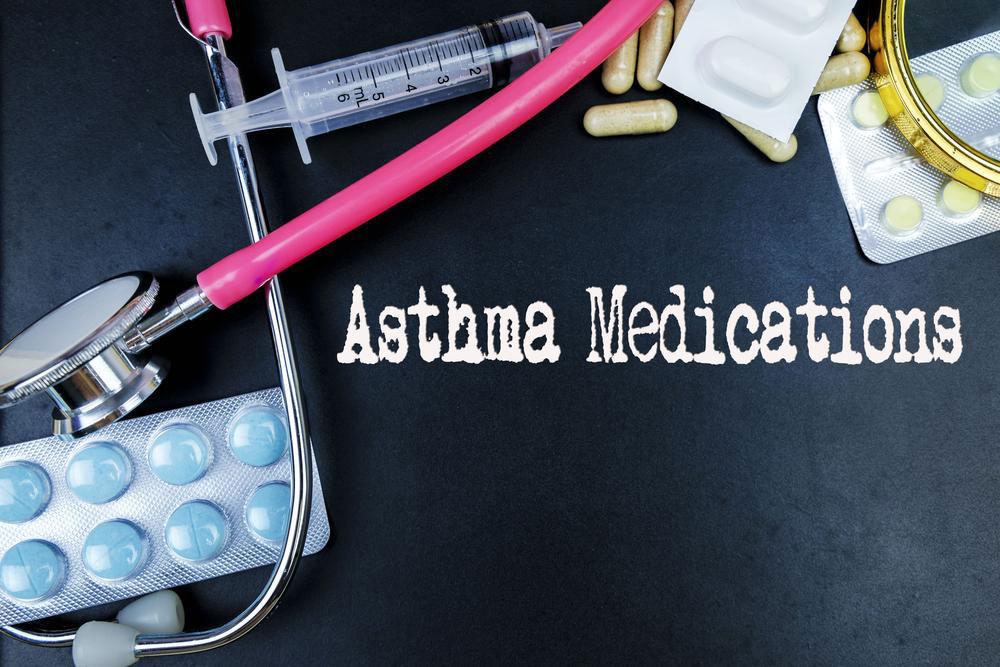6 FDA-approved asthma medications to know about

There is no known cause of asthma; usually, a combination of genetic and environmental factors lead to the condition. Exposure to allergic substances and irritants can trigger asthma symptoms. The triggers and symptoms vary from person to person. Everything from airborne substances like pet dander, mold spores, the common cold, cold air, smoke, GERD, and stress can trigger asthma symptoms. These triggers can induce asthma symptoms such as shortness of breath, chest tightness, chest pain, wheezing or whistling sound when exhaling, coughing attack, or wheezing attack.
These symptoms can be alleviated and controlled using asthma medications. There are no complete treatments for asthma, but therapies and medications are used to prevent flare-ups and keeping the symptoms under control. For flare-ups, quick-relief inhalers are recommended. Long-term control of asthma symptoms can be done with certain FDA-approved asthma medications.
Fasenra
It is a medication used for the treatment of a type of severe asthma called eosinophilic phenotype asthma. This medication is usually prescribed to patients who are 12 years or older. Younger patients whose asthma condition is not under control with current medications have found relieve with the use of Fasenra. It is prescribed along with asthma maintenance medications. The medication lowers the number of severe asthma attacks that require hospital stay or emergency room visits. Additionally, taking Fasenra lowers the daily maintenance dose of oral corticosteroids.
Zyflo
Zyflo is a leukotriene inhibitor prescribed for the prevention of asthma attacks in adults and children above 12 years of age. Leukotrienes are chemicals released in the body whenever a person breathes in allergens. These allergens make the lungs swell and cause muscle tightening around the airways, triggering asthma symptoms. Zyflo prevents the effects of the allergens on the lungs and respiratory system, thus controlling asthma symptoms. The medication is available in the form of tablets and should be avoided if the patient has liver disease.
Zyflo CR
This medication is usually prescribed for chronic treatment of asthma in adults as well as children 12 years of age. Usually available in the form of extended-release tablets of 600 mg, Zyflo CR is also prescribed for the treatment of prophylaxis. Treatment using Zyflo CR is recommended during acute exacerbations of asthma. Patients who have acute liver disease and a history of allergic reactions to zileuton are recommended to avoid taking Zyflo CR.
Dupixent
Used to treat moderate-to-severe asthma, Dupixent is prescribed to adults and children above 12 years. It is also recommended for those with moderate-to-severe eczema and is especially used in cases where the asthma is not under control with other asthma medicines. However, Dupixent should not be used to treat an asthma attack but to keep symptoms under control and prevent flareups. A rescue inhaler must be used in case of an asthma attack.
NUCALA
This medication is used for treating patients who have severe asthma. It is recommended to adults and children above 12 years only. Additionally, patients whose asthma is not well controlled with current medications are prescribed NUCALA. It has to be taken along with other asthma maintenance medications.
Rayos
It is a corticosteroid that lowers inflammation in the body and suppresses the immune system. Rayos is taken orally and used for the treatment of conditions like asthma, hormonal disorders, skin diseases, arthritis, and lupus.
The medications mentioned above are effective and quick in action, but it’s important that you consult a doctor before going ahead with any of them.


